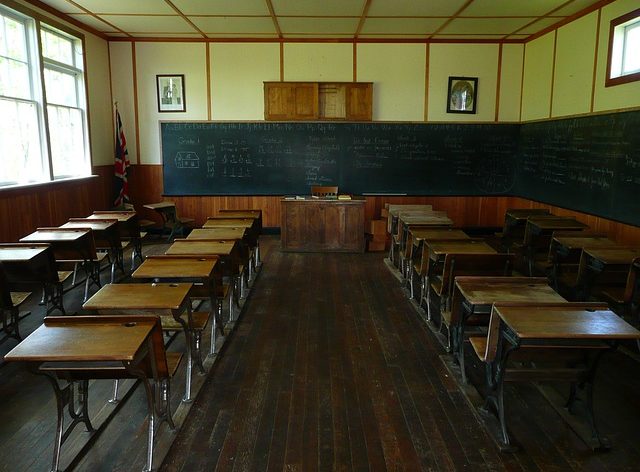New GI Bill Reporting Law Eases Burden On School Officials

The Ensuring the Best Schools for Veterans Act has been signed into law by President Joe Biden. The Act, which became law on August 26, 2022, is designed to help participating schools eliminate red tape and paperwork related to the GI Bill and addresses something called the “35% exception” to earlier rules designed to enhance school accountability with the Department of Veterans Affairs.
All About the 85-15 Rule
At issue is something known as the “85-15 rule” requirement for schools to be approved for the GI Bill. The rule requires a participating school or institution to have a certain number (15 percent) of students NOT using the GI Bill.
The basic intent seems to be one of quality control; having a certain percentage of students who are not veterans seems to confer a notion of quality education. You will find that concept repeated time and again in DoD literature and press releases about GI Bill issues in this area.
Why the 85-15 Rule Matters
If non-veterans are willing to pay out-of-pocket for the same programs a veteran can apply for using the GI Bill, the inference is that there’s a genuine demand for such a program, as opposed to situations where a school might be tempted to manufacture demand by marketing courses specifically to those using government benefits.
This basic 85-15 rule is not the issue, but something called the 35% exception. What is it?
The 35% exception is a tricky concept to write about; many sources take for granted the reader knows what the exception is, and fail to define it.
For that, we have to go to the Ensuring the Best Schools For Veterans Act, which states that in general, the Department of Veterans Affairs shall NOT approve GI Bill enrollments in schools that have “more than 85 percent of the students enrolled in the course” who have “all or part of their tuition, fees, or other charges paid to or for them by the educational institution or by the Department of Veterans Affairs under this title or under chapter 1606 of title 10…”
That means that schools are essentially required to submit enrollment data to the VA for all programs to prove they have at least 15% non-GI Bill enrollment.
The paperwork burden for this is impressive. But schools theoretically got a break of sorts thanks to the 35% exception, which states that schools could be exempt from 85-15 reporting in cases where the total student enrollment shows that GI Bill students make up 35% or less of the total student population. The reporting burden under the 35% exception is reduced.
Trouble In 2021
A revision to the rules in 2021 required approved GI Bill schools to reapply for their 35% exception and submit 85-15 Rule documentation for all programs, establishing a huge paperwork burden for the schools–they could not qualify for the 35% exemption without doing the work anyway.
Enter the New Law
The Ensuring the Best Schools for Veterans Act passed in 2022 makes the rules simpler, and provides the ability to verify the percentages discussed above with a reduced paperwork burden on the institutions. The 2021 requirement for schools to requalify for the 35% exception has been eliminated.
Under the rules as they exist today, a school with a low veteran population (defined as 35% or less of the total student body at that school) does not have to report the extensive 85-15 Rule data (which has in the past typically required the school to furnish enrollment information for all its programs of study) OR reapply for the exemption as it was required in 2021.
What Does the New Law Mean?
Some schools target veterans in their marketing and outreach. That does not automatically mean a school is untrustworthy, but the Act in this context was created to hold schools accountable.
The Act recognizes in spirit that some institutions of higher learning aren’t all they advertise themselves to be. One symptom of that problem can be found in situations where there are more veteran enrollees than civilians. While not necessarily always a sign of bad intent, a heavily skewed veteran demographic is a warning sign,
Why do we say this? Because according to Census.gov, the approximate population of veterans in the United States is seven percent. 93 percent of all Americans are not veterans.
Demographically speaking, to find a disproportionately large number of vets enrolled in a single college doesn’t make sense in that context. But it DOES make more sense if veterans are actively targeted by a college marketing department.
Some politicians tout this new law as a way to reduce school fraud and help veterans avoid programs designed simply to harvest GI Bill benefits from unsuspecting students. That may make it sound like there are punitive measures in the law that could be used against a for-profit college (as an example) that cheated veterans out of GI Bill benefits.
But aside from the Department of Veterans Affairs refusing the school as a recipient of those funds (which in and of itself is definitely significant), there are no other legal provisions such as prosecution mentioned in the Act.
The threat of refusing to accredit a school as an approved GI Bill participating institution is damaging enough in the eyes of veterans who may be tempted to apply at such a school.
About the author
Editor-in-Chief Joe Wallace is a 13-year veteran of the United States Air Force and a former reporter/editor for Air Force Television News and the Pentagon Channel. His freelance work includes contract work for Motorola, VALoans.com, and Credit Karma. He is co-founder of Dim Art House in Springfield, Illinois, and spends his non-writing time as an abstract painter, independent publisher, and occasional filmmaker.


